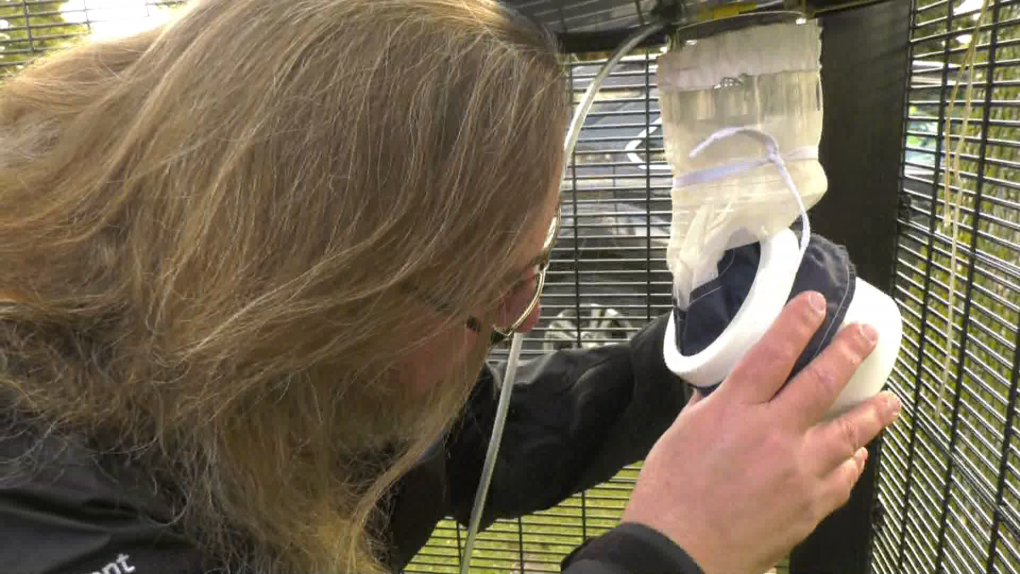As Edmonton continues to see spring showers, pest management experts are keeping a close eye on what it means for mosquito development.
“At this point we’re not seeing a lot of adult mosquito activity,” said Mike Jenkins, a senior scientist with the City of Edmonton’s Pest Management Laboratory.
“Our trap numbers are among the lowest we’ve had for a May period in many years,” he added.
Jenkins said most of the mosquito activity is happening around roadside ditches, industrial parts of the city and areas with low-lying depressions.
“Roadside ditch and ground crews have been out treating those habitats, reducing the numbers of mosquito larvae that are developing in those areas and hopefully we’ll continue to have low mosquito numbers going forward,” he said.
‘Enjoy the lack of mosquitoes,” Jenkins said.
 Mike Jenkins checks a mosquito trap on May 23, 2024. (Matt Marshall, CTV News Edmonton)
Mike Jenkins checks a mosquito trap on May 23, 2024. (Matt Marshall, CTV News Edmonton)
Conditions have been ideal for keeping not just mosquitoes away but Jenkins said are also keeping the number of yellow jackets and ants low.
“That could change drastically,” said Jenkins.
“If we get a lot of precipitation coming in in June, if we get high temperatures that increase both the development of mosquitoes but also ramps up the development for yellow jackets and ants,” he said.
Jenkins said the Aedes Vexans species that develop in summer conditions can go from nothing to biting in less than a week with enough rain.
“A dormant egg that has been sitting there for five to 10 years, that can be triggered by a rainfall and it goes through its cycle of larval stages and emerges as an adult within four to five days,” he said.
The Culex Pipiens is another species Edmonton mosquito experts are watching. It was discovered a few years ago and Jenkins said it’s a species known to carry the West Nile Virus.
“We did get some West Nile cases in Alberta last year but not in the Edmonton area,” said Jenkins.
It’s a species linked more to temperature than rainfall and habitats usually develop in standing water around people’s property, in things like bird baths, eaves troughs, old tires and uncovered rain barrels.
“Make sure that those aren’t acting as a mosquito development site,” said Jenkins.
“Empty the water out of them. If you have a bird bath in particular, change the water at least once a week,” he added.
He said crews are finding more Cuelax Pipiens in Edmonton every year and that the city is developing a plan on how to best address the increase.
 Mike Jenkins checks a new carbon dioxide mosquito trap being used in Edmonton. (Matt Marshall/CTV News Edmonton)
Mike Jenkins checks a new carbon dioxide mosquito trap being used in Edmonton. (Matt Marshall/CTV News Edmonton)
The city has also started using new traps to collect mosquito data.
“We’ve now switched entirely to carbon dioxide baited traps,” said Jenkins.
The traps are battery powered giving crews more flexibility on where they can be put up, and use carbon dioxide instead of a light bulb to attract mosquitos.
“Rather than having all the flies and moths and everything else that gets attracted to the light bulbs we get a sample that is pretty much just mosquitoes,” Jenkins said.
“As we catch them they’re actually still alive and so they’re very good specimens, we can do things like virus sampling and stuff on those specimens rather than with the light traps where they’ve been sitting dead for a week,” he added.